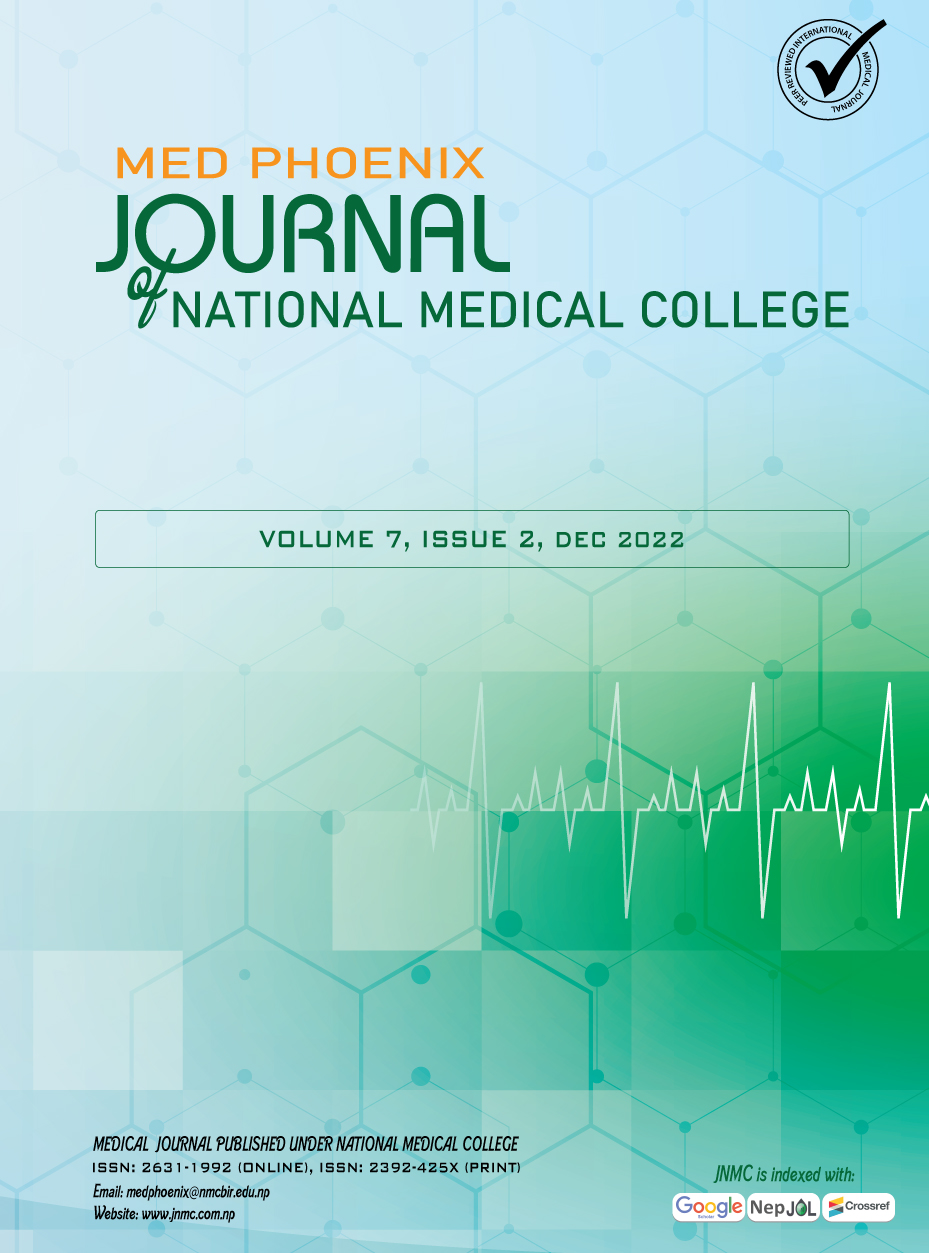Evaluation of Intrauterine Fetal Death at Tertiary Care Centre: A Descriptive Cross-Sectional Study
DOI:
https://doi.org/10.3126/medphoenix.v7i2.50777Keywords:
Fetal deaths, Fetal demise, Perinatal deaths, Prevalence, Still birthAbstract
Introduction: Intrauterine fetal death (IUFD) is unpredictable despite of regular antenatal checkup. Early assessment and timely intervention may reduce the incidence of IUFD. This study aimed to find out the prevalence of IUFD among pregnant women at tertiary care center.
Materials and Methods: A descriptive cross-sectional study was conducted in a tertiary care center from 1st November 2020 to 31st October 2021. Ethical approval was obtained from the Institutional Review Committee (Registration number: F-NMC/515/076-077). Demographic data were collected using predesigned proforma in pregnant women with intrauterine fetal demise identified before, during labor and delivery.
Results: Among 1441 deliveries, IUFD was found in 81 (5.62%). The highest stillbirth rate occurred in the 3rd trimester between 37 - 42 weeks 41 (50.61%), 85.18% unemployed, 36% were primigravida, 46.91% in 20 – 24 years age group. The commonest obstetric complications encountered were hypertensive disorders at 14.81%, unexplained (13.58%). Macerated stillbirths accounted for 49 (60.49%. Over 85% of the mothers had vaginal delivery while 15% had cesarean section.
Conclusion: A significant portion of IUFD can be prevented by providing patient and community health education for regular antenatal care regarding warning signs during antenatal, hospital delivery, early referral.
Downloads
Downloads
Published
Versions
- 2023-01-06 (3)
- 2023-01-04 (2)
- 2022-12-31 (1)
How to Cite
Issue
Section
License
Copyright (c) 2022 Med Phoenix

This work is licensed under a Creative Commons Attribution 4.0 International License.
This license enables reusers to distribute, remix, adapt, and build upon the material in any medium or format, so long as attribution is given to the creator.
Copyright on any research article is transferred in full to MED PHOENIX upon publication. The copyright transfer includes the right to reproduce and distribute the article in any form of reproduction (printing, electronic media or any other form).




